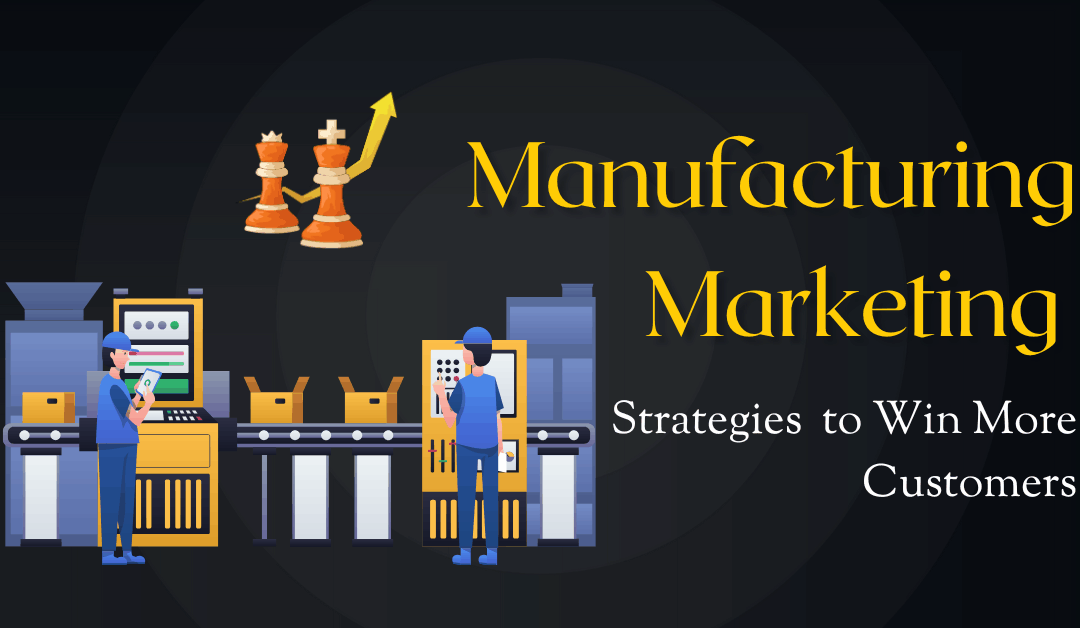Manufacturing Marketing Strategies: 9 Tactics That Work & Inspiring Examples
Why is your shop, with its superior tech and quality control, losing bids to a competitor you know isn’t as good? It’s not your sales team. It’s your marketing.
Today’s B2B buyers—the engineers, procurement managers, and operations directors—are industrial-strength researchers. They are 70% of the way to a decision before they even think about calling you. Your website, your content, and your online reputation are now your hardest-working sales reps. To win their business, you need sharp manufacturing marketing strategies that build trust long before that first call.
Here’s an overview of the tactics that deliver real, measurable results.
1. SEO: Be the Technical Answer
Think like an engineer. When they have a problem, they don’t search for “Acme Corp.” They search for “high-tolerance 5-axis CNC machining” or “FDA-approved plastic injection molding.” Search Engine Optimization (SEO) is the strategy to ensure your company name is the top answer to their technical question.
- Why it works: It’s not about interruption. It’s about being the most helpful answer right when they’re actively looking for a solution, delivering a hot, qualified lead straight to your site.
- Example: A custom metal fabrication company writes a detailed, expert guide titled “Laser Cutting vs. Plasma Cutting: A Cost-Benefit Analysis for Stainless Steel.” This attracts engineers, proves expertise, and naturally guides them toward the company’s services.
2. Content Marketing: Be the Expert in Their Pocket
If SEO brings them in, your content makes them stay. For complex, high-stakes manufacturing, your content is your credibility. It’s your chance to prove your expertise 24/7.
This goes way beyond a simple blog:
- Case Studies: Don’t just list your capabilities. Prove them. A title like “How We Reduced Part-Cost by 22% for an Aerospace Client by Redesigning for Manufacturability” is a powerful sales tool.
- Downloadable Guides: Be the authority. “The Engineer’s Guide to Material Selection for High-Heat Applications” captures a lead (their email) and establishes you as a technical resource, not just a vendor.
- CAD Files: This is a killer tactic. Let an engineer download the 3D CAD file for your custom hinge or specialty component. You’ve just made it 10x more likely your part ends up in their final product design.
3. Video Marketing: Show, Don’t Just Tell
Stop telling people you have a state-of-the-art facility. Show them. Video is the ultimate trust-builder in an industry built on precision and process.
- Why it works: A 90-second video of your robotic welding line, your clean room, or your quality inspection process builds more trust than a 10-page brochure. It makes your operation real and tangible.
- Example: Create a “Process in Action” series. One video shows your laser cutting precision with close-ups. Another shows your powder coating finish. A third introduces your Head of Quality Control explaining your CMM inspection process. This showcases your tech and your people.
4. Webinars: Educate to Generate Leads
You have engineers on staff who have forgotten more about fluid dynamics than your competitors will ever know. Use them. A webinar is a live (or on-demand) classroom where your expert is the teacher.
- Why it works: You’re not selling; you’re educating. This generates a list of highly engaged, self-qualified leads who have just spent an hour learning from you.
- Example: A manufacturer of custom gaskets hosts a webinar on “Navigating New EPA Sealing Standards for Chemical Processing.” Every single attendee is a potential customer facing a specific, expensive problem you are an expert at solving.
5. Email Marketing: Nurture the Marathon Sale
The B2B sales cycle is a marathon, not a sprint. The engineer who downloaded your guide today might not have a budget for nine months. How do you stay on their radar without being annoying? Smart email nurturing.
- Why it works: It’s about building a relationship over time. You’re not spamming. You’re sending them relevant case studies, new technical articles, and invites to your next webinar. You’re staying helpful, present, and top-of-mind.
- Example: Create an automated “drip campaign.” When someone downloads your “Injection Molding Guide,” they automatically get a follow-up email a week later with a related case study. A month later, they get an invite to your webinar on “Choosing the Right Polymer.” It’s an automated relationship builder.
6. LinkedIn: Humanize Your Industrial Brand
Your company doesn’t just make parts; it’s run by people. LinkedIn is where you show them off. This is the new B2B networking floor.
- Why it works: It humanizes your brand. You’re not a faceless corporation; you’re a team of smart people solving problems. It’s also the perfect platform for sharing all that high-value content (videos, case studies, guides) you’re creating.
- Example: Post a photo of your team celebrating a complex project shipment. Share a quick video from your trade show booth. Have your lead engineer write a short post about a new material they’re testing. This shows you’re active, engaged, and proud of your work.
7. Account-Based Marketing (ABM)
Why wait for fish to bite when you can go spear-fishing? Account-Based Marketing (ABM) is a focused, high-effort strategy. You pick your top 10 “dream” clients, and sales and marketing work together to win them.
- Why it works: It flips the traditional marketing funnel. Instead of marketing to 1,000 companies to find one customer, you market directly to the one customer you want. It’s one of the most efficient manufacturing marketing strategies for high-value B2B deals.
- Example: You want to land a contract with a specific EV manufacturer. Your team creates a custom landing page just for them, showing case studies of your past automotive work. You run LinkedIn ads targeting only engineers at that one company. Your sales team sends a high-end, 3D-printed model of a potential part directly to their head of R&D. It’s a full-court press.
8. Digital Advertising (PPC & Social Ads)
SEO takes time. Sometimes you need leads now. That’s where digital advertising comes in. It’s all about precision-targeting your budget.
- Why it works: You get immediate visibility in front of the exact people you want to reach. No wasted money on ads shown to the wrong audience.
- Example: You run Google Ads (PPC), so when someone searches “ITAR-compliant CNC machining,” your ad is the first thing they see. You run LinkedIn Ads to promote your new “Aerospace Case Study” to people with the job title “Procurement Manager” or “Design Engineer” at companies like Boeing or Lockheed Martin.
9. Trade Shows: The Physical Anchor
Digital is essential, but in manufacturing, buyers still want to shake your hand, see your product, and look you in the eye. Trade shows are your “in-person” anchor.
- Why it works: This is where digital and physical collide. You use your digital channels (email, LinkedIn) to book meetings at your booth before the show. Then, you capture leads at the show and put them back into your digital email nurturing campaigns.
- Example: Before FABTECH, you email your prospect list offering a 15-minute “live demo” at your booth. At the show, you scan their badge, and they’re automatically added to a post-show email sequence thanking them for stopping by and sharing your “Top 3 Takeaways” from the event.
How These Strategies Create a Winning System
These aren’t just nine separate ideas; they are a complete, integrated system:
- ATTRACT: SEO & PPC ads bring new, searching buyers to your digital doorstep.
- ENGAGE: Videos, case studies, and guides prove your expertise and build trust.
- CAPTURE: Webinars & downloadable content turn anonymous visitors into named leads.
- NURTURE: Email marketing & LinkedIn build the relationship over the long sales cycle.
- CONVERT: Your sales team, supported by ABM and in-person trade shows, closes deals with leads who are already convinced of your value.
This integrated approach is the core of modern manufacturing marketing strategies. It’s how you stop competing on price and start winning on expertise.

